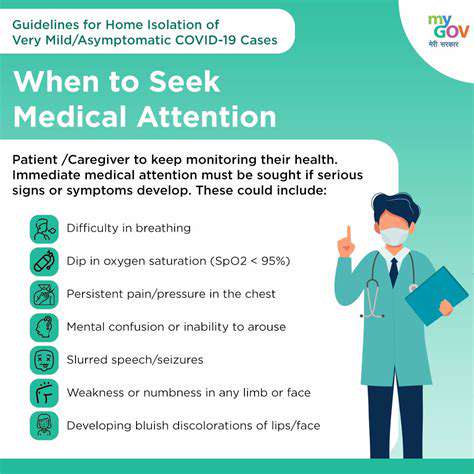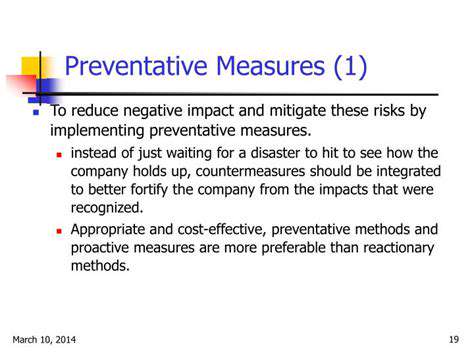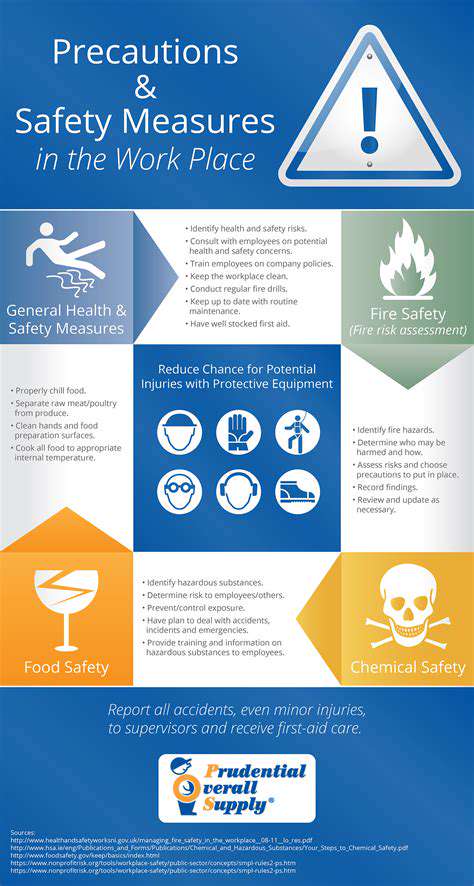Bump on Back of Head Hurts to Touch: What You Need to Know
Outline
Understanding Bumps on the back of the head involves anatomy knowledge.
Common bump causes include trauma, cysts, and lipomas.
Pain or tenderness may indicate inflammation or serious conditions.
Seek medical help for sudden, painful, or rapidly changing bumps.
Treatment options range from monitoring to surgery, depending on the cause.
Painful bumps may require careful symptom tracking for proper diagnosis.
Regular self-exams can help monitor bumps and prevent complications.
Healthy lifestyle choices support skin health and reduce bump occurrence.
What Causes a Bump on the Back of the Head?
Understanding the Anatomy of the Head
The human head consists of various structures, including bones, muscles, and soft tissue. The back of the head, more specifically the occipital region, is composed of the occipital bone and is crucial in protecting the brain. Understanding this area provides insight into the various formations and potential bumps that can occur. Additionally, the skin, connective tissue, and muscles contribute to the overall appearance and function of the back of the head.
When a bump appears on the back of the head, it's essential to recognize that it could be linked to any of these anatomical structures. The variety of tissues means that a range of conditions could manifest as a bump, from benign to more serious concerns. Thus, a thorough understanding of the anatomy can assist both patients and healthcare providers in identifying the cause and required treatment.
Each layer of tissue has its characteristics, with skin being the most superficial and densely innervated, which can lead to increased sensitivity. Beneath the skin, fatty tissue and muscle contribute to flexibility and cushion. Should a bump form, each of these anatomical components might be involved, necessitating a closer examination to determine the nature of the bump and whether it is a cause for concern.
Common Causes of Bumps on the Back of the Head
Several factors can lead to the development of a bump on the back of the head, with some of the most common being trauma and injury. A contusion resulting from a fall or impact can create a lump due to localized bleeding and swelling. In cases where there is bruising, immediate attention may be warranted, especially if accompanied by other symptoms like pain, dizziness, or confusion.
Another frequent cause is cysts, such as sebaceous cysts, which may develop under the skin. These are generally benign and arise from blocked hair follicles or oil glands. While they are typically harmless, cysts can sometimes become infected or inflamed, leading to discomfort or a visible bump. Understanding the difference between cysts and other types of bumps is crucial for proper treatment.
Additionally, lipomas, which are soft tissue tumors composed of fat, can create painless bumps. While lipomas don’t usually require treatment unless they cause discomfort or lead to other complications, recognizing them is important, as they may require monitoring over time.
Symptoms Associated with Bumps
While bumps on the back of the head are often harmless, certain associated symptoms can indicate a need for medical evaluation. Pain or tenderness when touching the bump is a significant symptom that can indicate inflammation or injury. Therefore, assessing the level of discomfort can provide valuable information regarding potential underlying conditions.
In some cases, bumps may be accompanied by other symptoms like redness, warmth, or discharge. These signs can suggest an infection, particularly if the area becomes tender or swollen. Monitoring these symptoms alongside the presence of the bump can help differentiate between benign and more serious health concerns.
Additionally, neurological symptoms such as headaches, dizziness, or changes in vision should not be ignored if they arise concurrently with the bump. Such symptoms could indicate involvement of the underlying skull or brain, underscoring the importance of seeking medical attention as soon as possible.
When to Seek Medical Attention
Knowing when to consult a healthcare professional regarding a bump on the back of the head is vital for your health. If the bump appears suddenly following an injury or if it is accompanied by severe pain or other concerning symptoms, immediate medical assessment is essential. This can help rule out any serious conditions, such as concussions or fractures that could require urgent care.
Should the bump increase in size or change in characteristics over time, it is also advisable to seek medical advice. Changes in size, color, or texture could suggest that further investigation is warranted, especially if accompanied by symptoms like fever or persistent discomfort.
For individuals with a history of skin issues or known conditions affecting the lymphatic system, timely consultation may help prevent complications. Doctors can evaluate the bump in the context of their medical history and provide necessary treatment, whether it's medication, a minor procedure, or further diagnostic tests to ensure overall health.
Treatment Options for Bumps
Treatment options for bumps on the back of the head can vary significantly based on the underlying cause. For benign bumps such as lipomas or cysts that aren’t causing discomfort, no treatment may be necessary. However, monitoring might be required to address any changes that could arise over time.
If a bump is determined to be an infection, healthcare providers might prescribe antibiotics and recommend warm compresses for swelling. In some cases, drainage of an abscess or cyst might be necessary, followed by appropriate wound care to prevent further infection.
In situations where the bump is suspected to be more serious, such as a tumor, referral to a specialist for imaging studies may be required. Depending on the diagnosis, treatment could involve a combination of surgical intervention, medications, and follow-up care to ensure successful healing and recovery.
Symptoms Accompanying a Painful Bump
Understanding Painful Bumps
A painful bump on the back of the head can arise from various causes, manifesting through distinct symptoms. Recognizing these symptoms is crucial for determining the appropriate course of action. Patients often report localized pain, tenderness, or an increase in pain when pressure is applied. Understanding these signs can help in differentiating between minor issues and conditions requiring medical assessment. This awareness can lead to timely intervention, minimizing potential complications.
In addition to pain, individuals may experience swelling or redness around the affected area. A visible bump could be an indication of inflammation or an underlying issue such as an infection. If the bump feels warm to the touch or is changing in size, these could be red flags signaling the need for medical evaluation. Tracking these symptoms diligently can guide healthcare professionals in rendering an accurate diagnosis.
Some patients may also notice associated symptoms such as headaches or dizziness, which could complicate the clinical picture. These additional symptoms should be documented carefully, as they provide critical information for healthcare providers. Sometimes, headaches that accompany a painful bump can hint at underlying issues related to migraines or neurological conditions. Understanding these connections is essential for effective treatment.
It's essential to take note of how long the bump has been present alongside its symptoms. A newly developed bump with severe pain may warrant immediate medical attention, whereas long-standing bumps that have remained stable often signify benign conditions. Monitoring changes over time can be crucial in differentiating between serious and minor health concerns.
Patients should also be observant of any other systemic symptoms that may accompany the bump, such as fever or fatigue. The presence of these systemic symptoms can indicate an infectious process that requires prompt evaluation and possibly treatment. Maintaining comprehensive records of symptoms can significantly aid health professionals in assessing the situation accurately.
Potential Causes of Painful Bumps
The etiology of painful bumps at the back of the head can be diverse, with causes ranging from benign to more serious health concerns. Common culprits including cysts, swollen lymph nodes, and lipomas are generally harmless but can cause discomfort and warrant medical evaluation if painful. Understanding these common causes helps alleviate panic while still encouraging proper monitoring and inquiry.
In some cases, trauma to the head can result in a hematoma, which might present as a painful bump. If you have recently bumped your head, it's crucial to monitor the bump closely for any signs of worsening pain or changes in neurological function. Seeking medical advice following trauma is essential to rule out more severe injuries, such as concussions or fractures.
Infections, such as those resulting from hair follicles or skin glands, can also manifest as painful bumps. Conditions like folliculitis or abscess formation are examples where bacteria compromise skin integrity, leading to localized pain and swelling. Identifying the exact nature of the infection is important for appropriate treatment, which may involve antibiotics or drainage.
Dermatological conditions, including psoriasis or eczema, may lead to bumps that can itch and cause discomfort. These conditions may be mistaken for a painful bump, but careful assessment of associated symptoms may clarify the diagnosis. Understanding your skin's health is vital, particularly if accompanied by persistent irritation or scaling.
Finally, certain infections or diseases can lead to swollen lymph nodes resulting in painful lumps at the back of the head. Identifying accompanying symptoms such as systemic illness or recent infections can provide helpful context. An accurate medical history aids healthcare professionals in addressing these conditions effectively, ensuring comprehensive care.
When to Seek Medical Attention
Knowing when to seek medical assistance regarding a painful bump is vital for your health. If the bump is accompanied by severe pain that interrupts daily activities or sleep, it's time to consult a healthcare professional. Persistent pain can indicate underlying issues that may require intervention. Dependable medical advice can prevent exacerbation of potential problems.
Another point of concern is the presence of high fever or flu-like symptoms alongside the bump. These accompanying systemic signs suggest an infectious process that often necessitates prompt evaluation. Do not overlook these additional symptoms, as they can guide healthcare professionals towards a more accurate diagnosis, leading to timely treatment.
If you notice any neurological symptoms like weakness, numbness, or confusion with the bump, you should seek immediate medical advice. These can be indicators of more serious conditions, including strokes or tumors. Emergency evaluation is critical to addressing any potential neurological emergencies effectively.
A bump that grows rapidly over time or changes in appearance should not be dismissed lightly. It is alarming when a seemingly innocuous bump turns into a more prominent or concerning formation, necessitating professional assessment. Monitoring changes is essential for managing one's health proactively and ensuring continued well-being.
Lastly, if the pain persists despite self-care measures like rest and ice application, or if the bump remains painful for an extended period, seeking medical advice is prudent. Persistent symptoms often hint at underlying concerns, and early intervention can lead to better outcomes and a more effective treatment plan.
Diagnosing the Cause of Painful Bumps
Diagnosing a painful bump on the back of the head requires an appropriate medical evaluation, often beginning with a thorough history and physical examination. During the initial consultation, practitioners will discuss the symptoms in detail, asking about the onset, duration, and any other associated issues. Effective communication is vital to ensure that no pertinent details are overlooked.
Diagnostic imaging techniques, such as X-rays, ultrasound, or MRI scans, may be employed depending on the clinical suspicion. These imaging modalities can provide valuable insight regarding the nature of the bump and surrounding structures. Identifying whether the bump is solid or cystic can help guide subsequent treatment stages.
In some cases, healthcare providers may recommend a biopsy if there is suspicion of a more serious condition, like a tumor or infection. A biopsy enables histological evaluation, which can provide conclusive evidence of the bump’s nature, leading to appropriate therapeutic interventions. Although biopsies can be concerning, they are essential for ensuring accurate diagnosis.
Blood tests may also be indicated, particularly if an infectious process is suspected. Markers of infection or inflammation can support or rule out potential diagnoses based on laboratory findings. Physicians will interpret the results in combination with clinical assessment to arrive at a comprehensive understanding of the patient's condition.
The multidisciplinary approach involving various specialists can also enhance the diagnostic process. Collaboration between primary care physicians, dermatologists, or neurologists may be necessary to explore complex cases. Not only does this teamwork enrich diagnostic possibilities, but it also streamlines treatment planning, ensuring comprehensive care for the patient.
Home Remedies and Management Options
Managing a painful bump on the back of the head at home is possible, but it’s essential to know when professional guidance is necessary. Initial self-care steps can involve rest and the application of ice packs to reduce swelling and numb pain. Applying ice for 15-20 minutes at a time several times a day can help alleviate discomfort as you monitor changes.
Over-the-counter pain relievers such as ibuprofen or acetaminophen can assist with pain management. These medications help to reduce inflammation and discomfort, allowing for improved functionality during recovery. However, closely adhering to recommended dosages is crucial to avoid potential side effects or complications.
Maintaining proper hydration and nutrition can also support the body’s healing processes. Adequate fluid intake is particularly important if the bump is associated with any infection. A well-balanced diet can provide essential nutrients that foster recovery and overall well-being as the body works to regain balance.
If mild symptoms persist, gentle massage around the area might provide relief. However, exercise caution when touching the affected area, ensuring that pressure is minimal. In some cases, the right kind of touch can enhance circulation and facilitate natural healing, while inappropriate manipulation may exacerbate pain.
Finally, observe the bump for any changes in size, color, or shape, and ensure you keep a record of any symptomatic changes. Should any symptoms worsen or new ones appear, don’t hesitate to seek medical advice. Being proactive in managing your health is essential for ensuring timely care and optimal outcomes.
When to Seek Medical Attention

Understanding the Signs that Indicate Urgency
It can be challenging to determine when a bump on the back of your head requires medical attention. Generally, you should pay close attention to accompanying symptoms, as they can provide crucial insight. For instance, if you experience dizziness, nausea, or confusion along with the bump, you should consult a healthcare professional immediately. These symptoms may suggest a more serious underlying condition. Keeping a close watch on any changes over a few days is also essential to gauge the severity of the situation.
Another indicator that you might need to seek immediate healthcare is the presence of severe pain that persists beyond the initial injury. Mild discomfort may be manageable and might resolve on its own, but intense pain can indicate a significant injury or other medical issue that requires further investigation. A thorough evaluation is often necessary to rule out broken bones or other serious issues. Additionally, changes in vision or balance should not be taken lightly and can be indications of a more complex problem.
Swelling at the injury site is also a symptom to monitor closely. If the bump begins to grow larger or doesn't subside after a reasonable time, it's advisable to get evaluated. Keeping a diary of all symptoms can help your healthcare provider make a more accurate diagnosis. If the bump exhibits signs of infection, such as warmth or redness around it, seeking medical attention should be a priority to prevent complications.
In some cases, the location and size of the bump can provide additional clues. If you notice unusual changes in your hearing, sensation, or coordination, these issues often stem from traumatic injuries. Your medical team will consider all of these factors when assessing your condition. Remember, it’s always better to err on the side of caution and consult with a healthcare professional if you're unsure.
Preparing for Your Medical Visit
When you decide to seek medical attention for a bump on the back of your head, being prepared can make the visit smoother and more productive. Start by documenting your symptoms, including when they began, their intensity, and any related symptoms. Having this information at hand not only helps you communicate effectively but also allows the healthcare provider to form a clearer picture of your condition. This can lead to more accurate diagnosis and treatment recommendations.
It's equally important to come prepared with your medical history. Previous head injuries, surgeries, or conditions that affect your overall health can significantly influence the assessment and treatment options. If you are currently taking medications or over-the-counter supplements, be sure to inform your healthcare provider. Other factors such as allergies can also be critical during your evaluation, especially if medication is required.
Be ready to discuss any incidents that may have led to the bump, such as falls or sports injuries. Providing details about the mechanism of injury helps medical professionals understand the force and potential severity of the impact. Including information about any prior head trauma and how you coped with it can also be essential in guiding your treatment. Don’t hesitate to ask questions about your condition or treatment options to ensure you have a complete understanding.
Lastly, consider bringing someone along to your appointment. Having a friend or family member can help you remember the information shared and provide support during this stressful time. They can also help you formulate additional questions for your healthcare provider. Ensuring that you are well-prepared can lead to a more positive outcome and peace of mind.
Potential Treatment Options
Understanding Conservative Treatments
When dealing with a painful bump on the back of the head, conservative treatments often serve as the first line of defense. Options such as rest, ice application, and over-the-counter pain relievers can alleviate discomfort effectively. Ice can help reduce swelling and numb the area, thereby providing immediate relief to those experiencing sharp pain when touched.
Additionally, being mindful of head movements is crucial. Gentle stretching and avoiding activities that may exacerbate the pain can promote healing. Consulting with a healthcare professional about these at-home methods ensures that they are appropriate for your specific condition, enhancing your recovery process.
Injection Therapies for Chronic Pain
For persistent or severe cases, injection therapies may be necessary to manage pain effectively. Corticosteroid injections, for instance, can reduce inflammation and provide longer-lasting relief than oral medications. These injections work directly at the site of the bump, targetting the root of the pain and helping restore normal function.
Another option includes trigger point injections, which target specific areas of muscle tightness and pain. By introducing a local anesthetic or corticosteroid into the afflicted muscle, this method can disperse tension and significantly lessen pain, enabling more comfortable movement and daily activities.
Surgical Intervention for Persistent Issues
In cases where conservative and injection-based treatments fail to provide relief, surgical options may be explored. Surgical intervention might involve the removal of a cyst, bump, or other abnormal growths that could be contributing to the pain. This approach is usually considered a last resort, but it can provide a solution for chronic conditions that severely impact quality of life.
Prior to any surgical procedure, comprehensive diagnostic testing is often necessary to accurately identify the cause of the bump and pain. This ensures that surgery targets the right issue and increases the likelihood of a successful outcome and full recovery.
Complementary Therapies for Enhanced Recovery
Complementary therapies can enhance recovery and management of pain associated with a bump on the back of the head. Options such as physical therapy, massage therapy, and acupuncture can promote healing through improved circulation and muscle relaxation. These therapies help address pain from multiple angles, encouraging both physical and emotional well-being.
Moreover, lifestyle changes, such as maintaining proper posture and incorporating relaxation techniques like yoga or meditation, can also contribute positively. Focused on reducing stress and tension in the neck and head area, these practices support overall healing and well-being while minimizing the likelihood of future discomfort.
Preventive Measures to Avoid Future Issues

Understanding the Causes of Bumps on the Back of the Head
Bumps on the back of the head can arise from various underlying issues, ranging from minor to serious conditions. Recognizing these causes early on can help in effectively managing the problem and preventing more significant health complications later on. Common causes include cysts, lipomas, and traumatic injuries that may create swelling in the underlying tissues.
While many people might experience these bumps at some point, it is crucial to understand when to seek medical attention. If a bump is associated with severe pain or other concerning symptoms, it’s essential to consult a healthcare professional to rule out any serious conditions like tumors or infections. Early diagnosis can lead to better treatment outcomes.
Regular Self-Examinations and Awareness
Performing regular self-examinations can help you monitor changes in your body, especially in areas like the head where bumps may appear unexpectedly. Being proactive about your health can prevent minor issues from escalating into more serious concerns over time. Make it a habit to check for any new growths or changes in existing bumps.
Awareness is key; understanding the characteristics of what is normal for your body can empower you to act swiftly when something unusual occurs. Always consult a medical professional when you notice any notable changes in size, shape, or pain sensitivity associated with a bump.
Protective Measures to Minimize Injury
Preventive measures can significantly reduce the likelihood of injuries that lead to bumps on the head. Wearing appropriate protective gear during sports and physical activities is essential and could safeguard against potential injuries that cause swelling or bumps. Make sure to use helmets when biking, skateboarding, or engaging in contact sports.
Creating safer environments at home and at work can also mitigate the risk of head injuries. Simple changes such as clearing hazards that could lead to falls or collisions can go a long way in ensuring your head remains safe from trauma. Always stay vigilant, especially in environments where head injuries are more likely to occur.
Healthy Lifestyle Choices to Promote Skin and Tissue Health
Maintaining a healthy lifestyle can contribute significantly to the health of your skin and tissues, which may minimize the likelihood of bump formation over time. Eating a balanced diet rich in vitamins and minerals supports your skin's health and enhances tissue resilience. Foods high in antioxidants, omega-3 fatty acids, and vitamins can play a critical role in sustaining skin integrity and overall health.
Incorporating hydration is equally important, as water aids in maintaining skin elasticity and repair. Proper hydration not only benefits your skin but also helps in reducing inflammation that can arise from various conditions. Healthy skin is less prone to developing bumps and other abnormalities, showcasing the importance of good lifestyle choices.
When to Seek Professional Help
Knowing when to consult a healthcare professional can be vital in preventing serious complications from initially benign issues. Prompt medical attention is warranted if the bump is unusually painful, persistent, or accompanied by other troubling symptoms like fever or neurological signs. A healthcare provider can conduct comprehensive examinations to rule out serious conditions associated with the bump.
Additionally, if you notice rapid changes in the bump's size or shape, or if it starts to drain fluid, professional evaluation is necessary. Early intervention by a qualified specialist can often lead to more effective treatment options, reducing potential complications that may arise from a neglected condition. Stay informed and prioritizing your health is a prudent approach to managing any head-related concerns.




